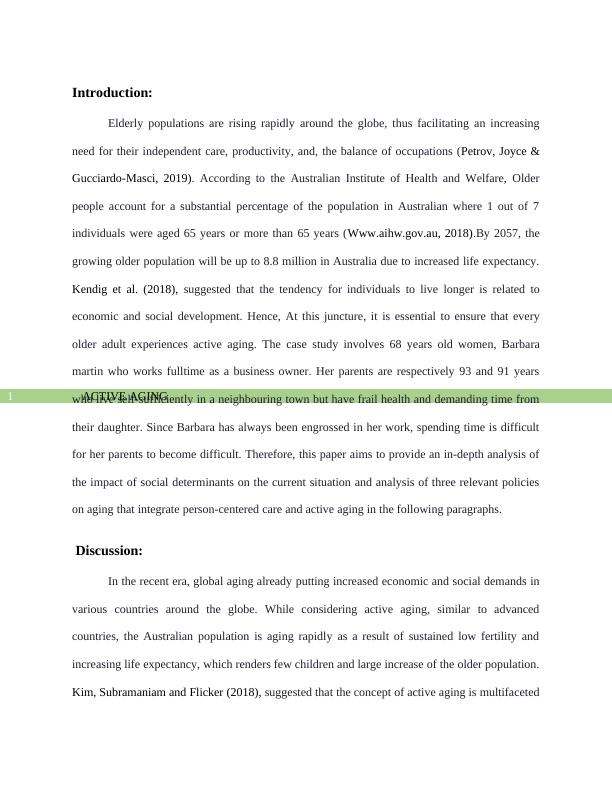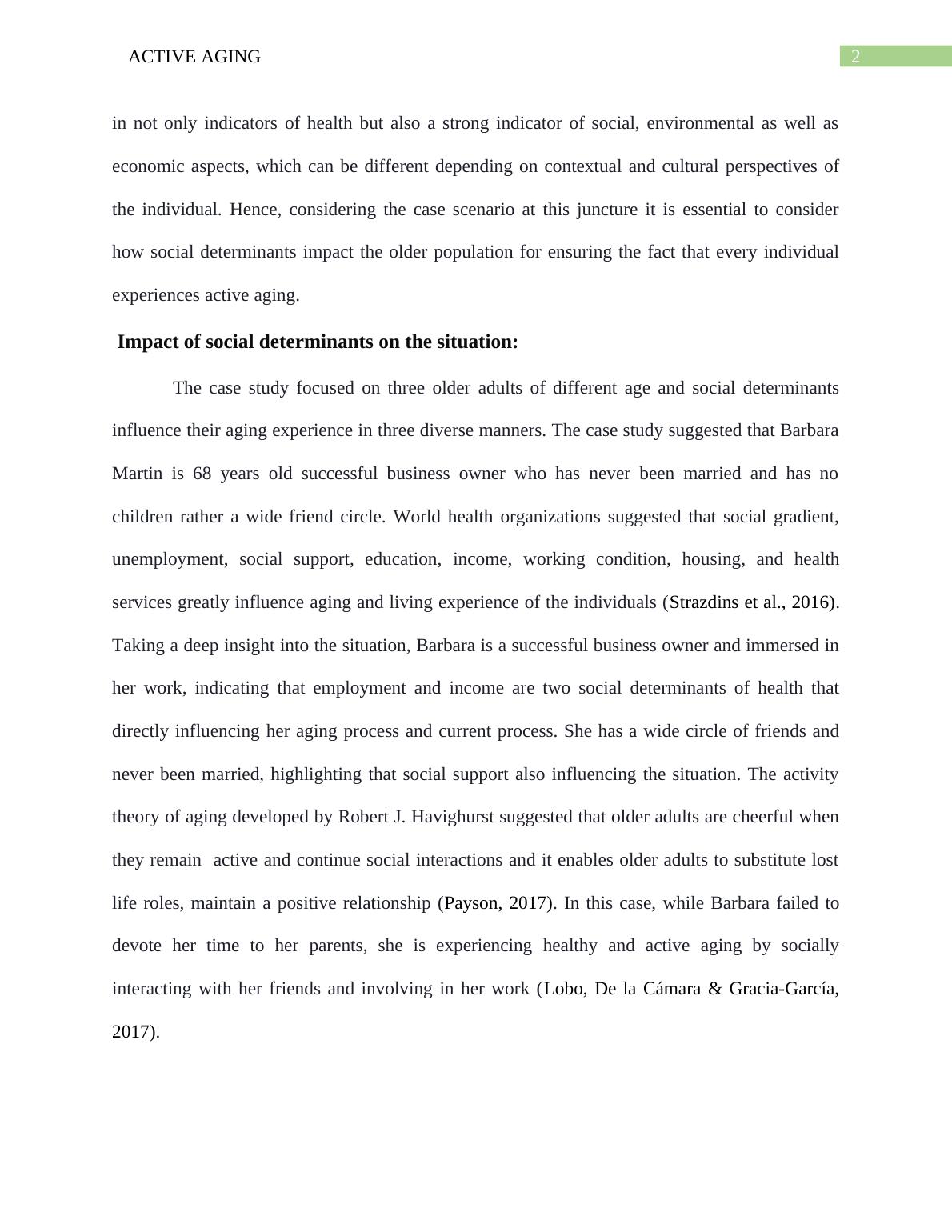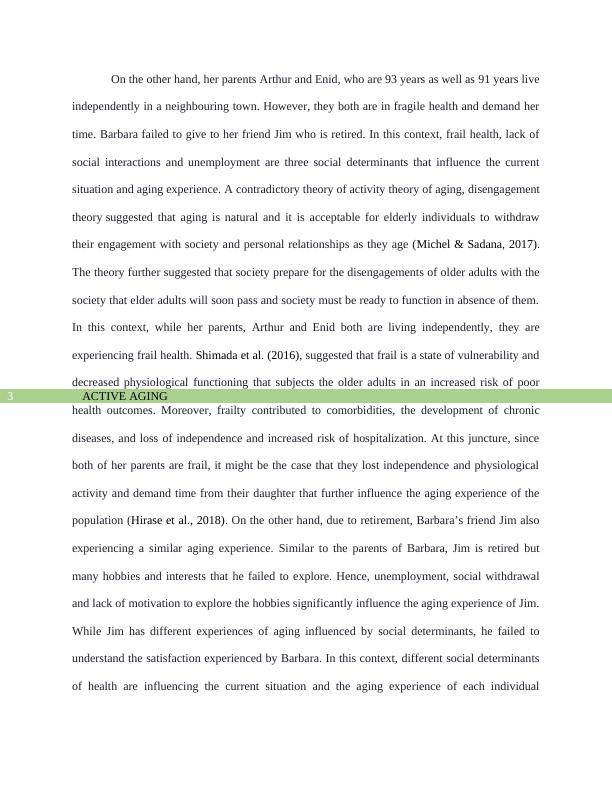Journal of the American Medical Directors Association
Analyzing the impact of social determinants of health and ageing on Barbara Martin's current situation and critically analyzing three relevant policies on ageing with a focus on Person Centered Care and Active Ageing.
12 Pages3273 Words32 Views
Added on 2022-08-27
Journal of the American Medical Directors Association
Analyzing the impact of social determinants of health and ageing on Barbara Martin's current situation and critically analyzing three relevant policies on ageing with a focus on Person Centered Care and Active Ageing.
Added on 2022-08-27
ShareRelated Documents
End of preview
Want to access all the pages? Upload your documents or become a member.
Ageing in Australia
|17
|4479
|294
National Palliative Care Strategy for Aged Population in Australia
|28
|8111
|173
Australian Institute of Health and Welfare
|9
|2711
|28
Why is healthy ageing important to individuals?
|4
|508
|363
Contexts of Practice: The Older Person and Family
|7
|2086
|346
Aging Adult Living With Intellectual Disabilities
|13
|4053
|207




